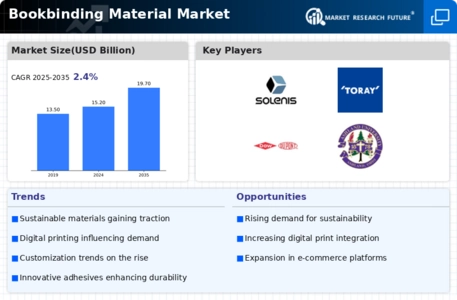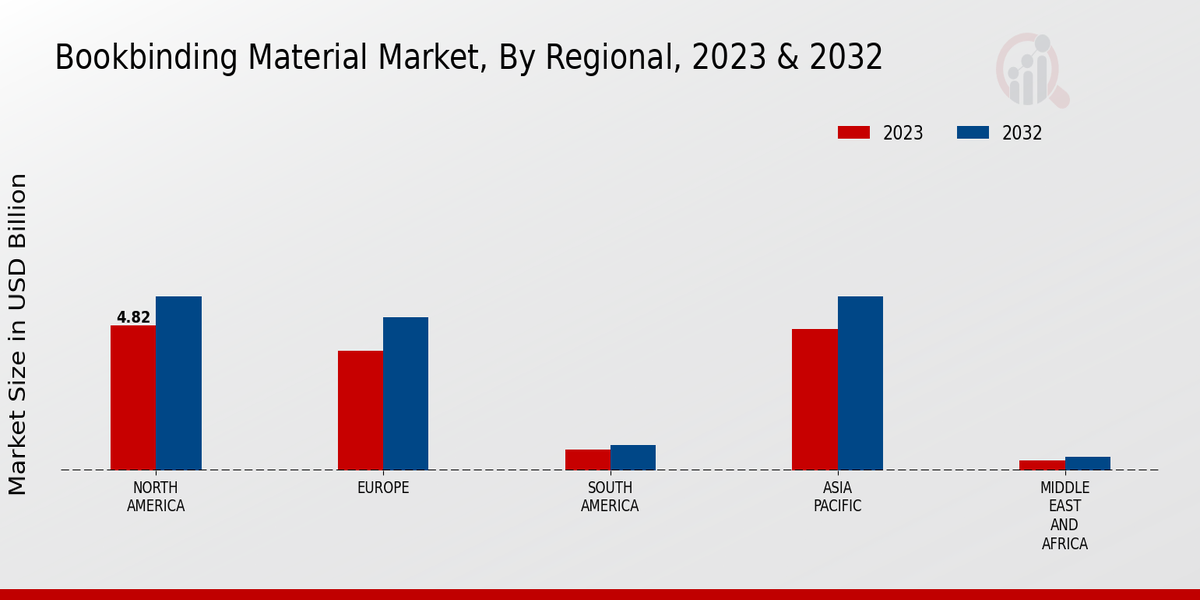Market Growth Projections
The Global Bookbinding Material Market Industry is poised for growth, with projections indicating a market value of 15.2 USD Billion in 2024 and an anticipated increase to 19.7 USD Billion by 2035. This growth trajectory suggests a compound annual growth rate of 2.38% from 2025 to 2035. Such figures reflect the industry's resilience and adaptability in response to evolving consumer preferences and market dynamics. The combination of rising demand for customized products, sustainability initiatives, and technological advancements positions the market for continued expansion. These projections highlight the potential for innovation and investment within the bookbinding materials sector.
Sustainability Initiatives
Sustainability emerges as a crucial driver within the Global Bookbinding Material Market Industry. With heightened awareness of environmental issues, manufacturers are increasingly adopting eco-friendly materials and practices. This includes the use of recycled paper, biodegradable adhesives, and sustainable sourcing of raw materials. As consumers prioritize environmentally responsible products, companies that align with these values are likely to gain a competitive edge. The market's growth trajectory, projected to reach 19.7 USD Billion by 2035, suggests that sustainability will play a pivotal role in shaping consumer preferences and influencing purchasing decisions in the coming years.
Expansion of E-commerce Platforms
The expansion of e-commerce platforms plays a significant role in the Global Bookbinding Material Market Industry. As online shopping continues to gain traction, consumers increasingly seek bookbinding materials through digital channels. This shift allows manufacturers to reach a broader audience and cater to niche markets that may not be accessible through traditional retail. The convenience of online purchasing, coupled with the ability to offer a wider range of products, enhances market accessibility. As a result, the industry is likely to witness sustained growth, with e-commerce becoming a vital distribution channel for bookbinding materials in the foreseeable future.
Growing Demand for Customized Products
The Global Bookbinding Material Market Industry experiences a notable increase in demand for customized bookbinding solutions. This trend is driven by the rising popularity of personalized books, journals, and planners, which cater to individual preferences. As consumers seek unique products, manufacturers are adapting their offerings to include a variety of materials and finishes. This shift not only enhances customer satisfaction but also stimulates market growth. In 2024, the market is projected to reach 15.2 USD Billion, reflecting the increasing willingness of consumers to invest in tailored bookbinding materials. Such developments indicate a robust future for the industry as customization becomes a key differentiator.
Technological Advancements in Production
Technological advancements significantly impact the Global Bookbinding Material Market Industry, enhancing production efficiency and product quality. Innovations such as digital printing and automated binding processes streamline operations, allowing manufacturers to meet increasing demand with greater precision. These technologies not only reduce production costs but also enable the creation of intricate designs and finishes that appeal to consumers. As the market evolves, the integration of advanced technologies is expected to drive growth, with a compound annual growth rate of 2.38% projected from 2025 to 2035. This trend indicates a shift towards more sophisticated production methods that cater to diverse consumer needs.
Rising Educational and Publishing Sectors
The Global Bookbinding Material Market Industry benefits from the growth of the educational and publishing sectors. As educational institutions expand and the demand for printed materials increases, the need for quality bookbinding materials rises correspondingly. This trend is particularly evident in developing regions, where literacy rates improve and educational resources become more accessible. The publishing industry also contributes to this growth, as the production of books, magazines, and other printed materials requires reliable binding solutions. The synergy between these sectors suggests a promising outlook for the market, with increasing investments in educational resources and publishing activities driving demand for bookbinding materials.















